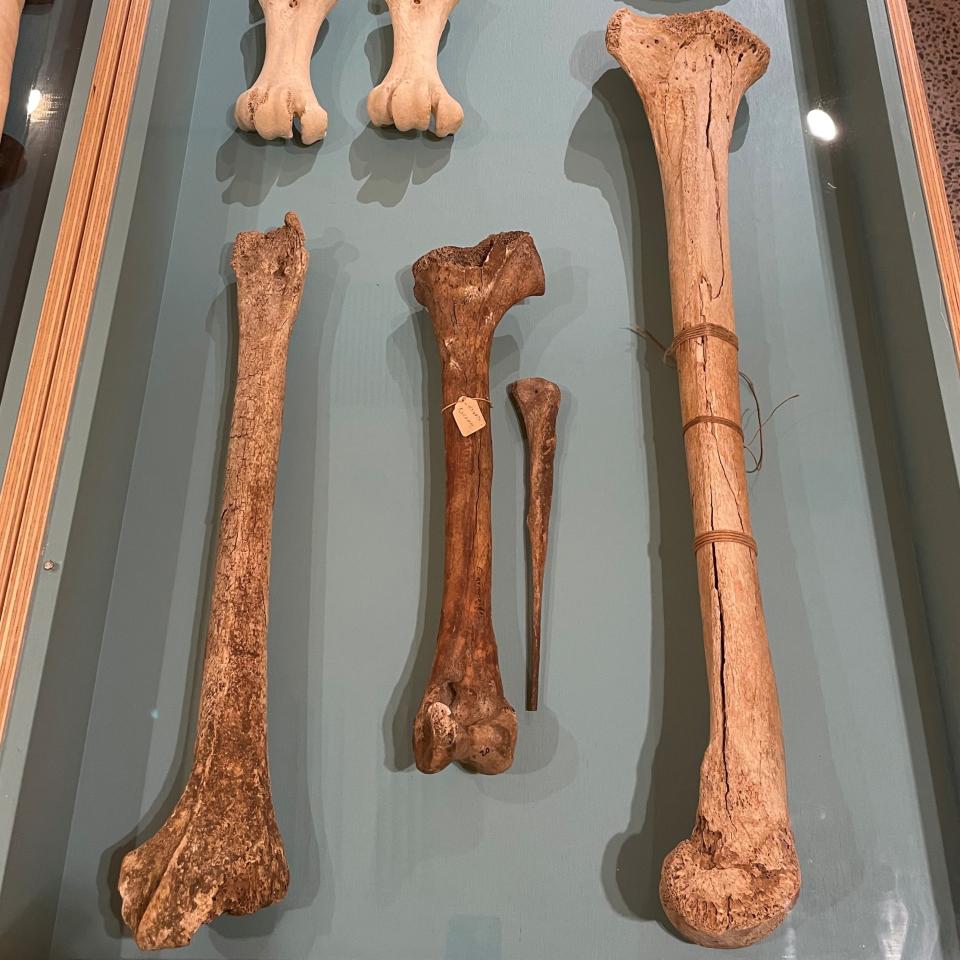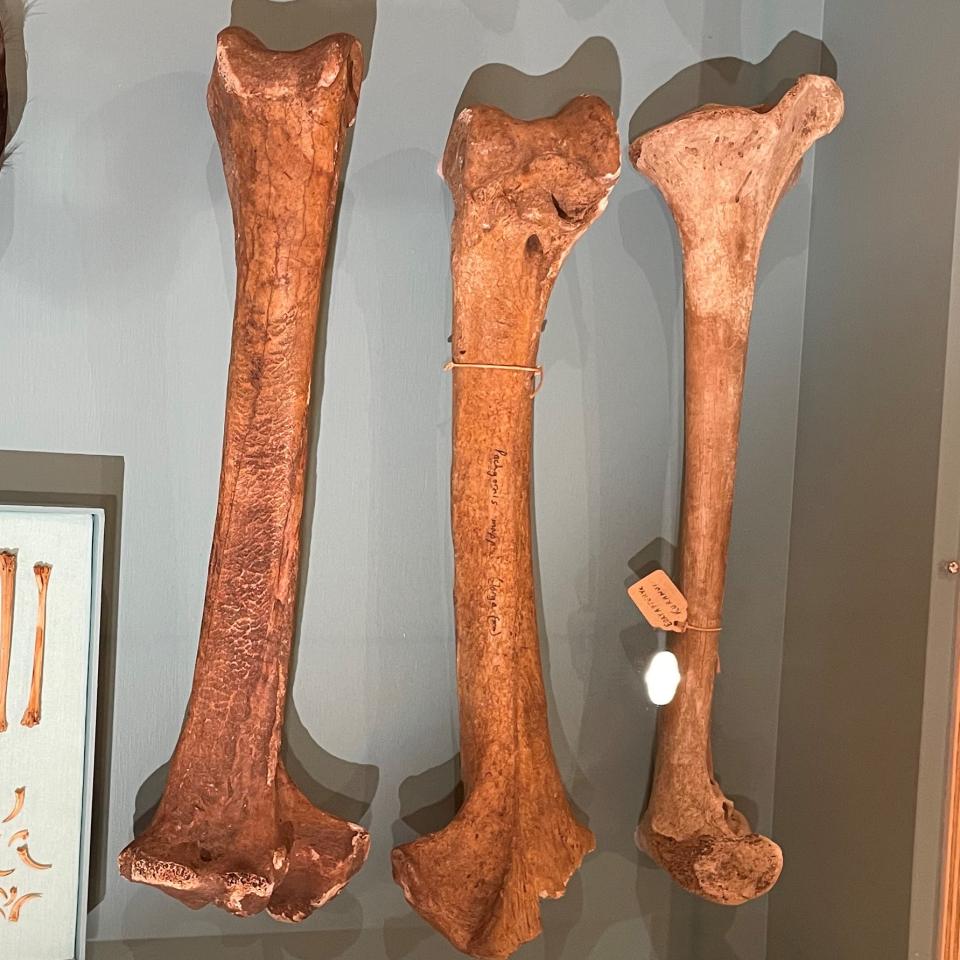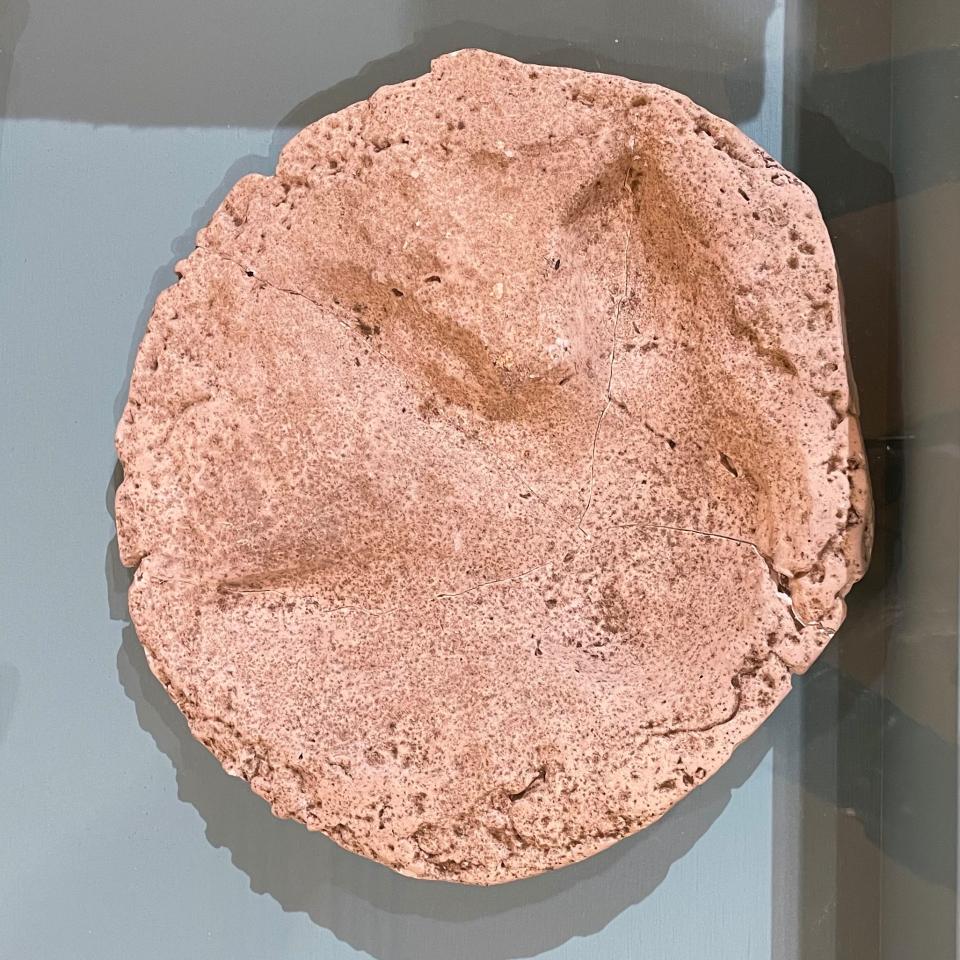Moa were extraordinary, giant birds unique to Aotearoa. They were the tallest birds ever known - reaching up to 3 metres - but not all of them were so big. Currently nine species are recognised, from the largest giant moa to smaller species the size of a large dog.
The first Polynesian settlers must have been amazed to find these giant birds throughout the country and moa soon became a key food - unfortunately moa were slow to reproduce and the numbers taken were unsustainable. Extinction of all moa species followed soon after humans arrived - all were probably gone by about 1400 A.D.
The Masterton Museum has left no records of where its collection items came from, but sand still drifts out of some of these bones, indicating a coastal source.
Moa footprint, plaster
Plaster cast of a moa (Dinornis sp) footprint. Broken but repaired with cracks. Secondary cast of NMNZs.461 Matheson 1896
Stout-legged moa - subfossil bones, bone
Thirteen bones from a Stout legged moa (Euryapteryx geranoides) found in the Wairarapa sand dunes. Some bones marked "Mr. G Meredith - loan"
Moa bones, Bone
Moa bones - four bones. One has a label that reads "Euryapteyx Koranui"
Moa bones, bone
Three Coastal moa (Euryaptyx curtus) bones.
Moa bone, bone
Mantell's Moa Bone. Large deposits of organic matter over bone. Housed in black crate (003).
Do you have any more information about these moa bones? Fill in the form and let us know.


